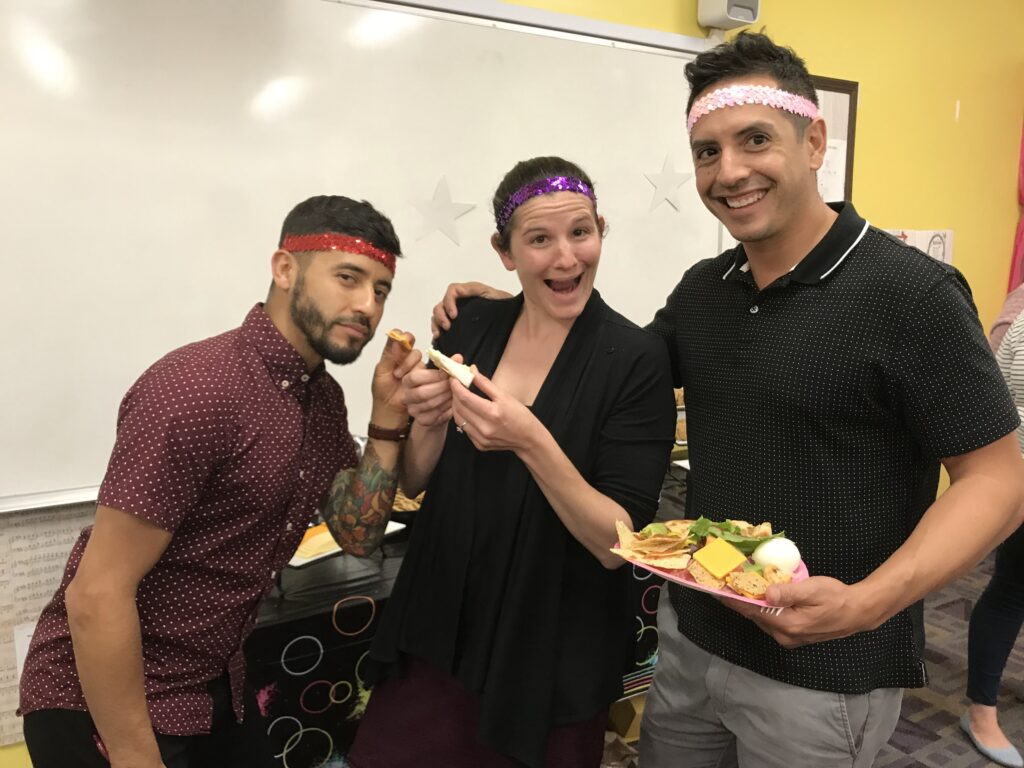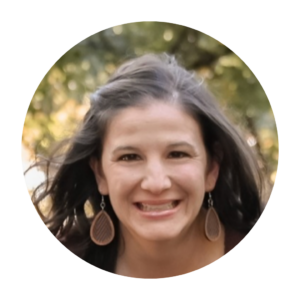By Meredith Dadigan Abel, K-5 IM Certified Facilitator
When teachers and students come back from spring break, spring fever is in the air, and classroom routines may falter. While teachers have spent the entire year setting high expectations and building strong relationships, they have also developed a sense of familiarity with students, which can sometimes lead to looser routines and classroom procedures. The familiarity students have with their teachers and classmates can be invaluable, but around this time of year, it might be time for a tune-up—revisiting community norms and intentionally working to strengthen classroom math communities.
Goal Setting in PLCs to Strengthen Classroom Math Communities
Professional Learning Community (PLC) meetings present the perfect opportunity for teachers to reflect on their practices and devise a plan to continue building joyful class communities where all students are knowers and doers of math. One essential step to having successful PLC meetings is to work with the school leadership team to create space during PLC meetings to reflect on how math communities are functioning. Giving teachers time to reflect with an asset-focused approach can be exactly what is needed to ensure their math communities remain strong up until the bell rings on the last day of school. IM provides guidance to support this work in “Key Structures in this Course,” which is found in the teachers’ guide. Teachers should reflect and brainstorm together as they set goals for their individual classrooms.

This is also the perfect time to develop or revisit school-wide goals connected to nurturing a thriving math community. Teachers can use each other as resources to reflect on strengths and areas of growth to help them align their expectations for classrooms. Phil Daro’s teaching moves to support math community presented by the Serp Institute is another helpful resource to guide this work. (Click on orange “See teaching ideas” links.) These ideas can help teachers set goals about the teaching practices that can best support improving their math community.
Whether setting goals for the classroom or school community, make sure goals are SMART (Specific, Measurable, Achievable, Relevant, and Time-Bound), so that when faculty members check in about their goals, they are able to really share how their progress is going.
Student-Centered Data-Driven Practices
One way to start talking about the math community in PLCs is for teachers to include feedback from students. By providing developmentally appropriate student surveys with questions about the math community in their classroom, teachers can receive valuable feedback. Teachers bring this data to PLC meetings, reflect together, and make SMART goals for their classrooms based on student input. By including student perspectives, there is an opportunity to cultivate a sense of belonging for all students and for students to feel ownership in cultivating a strong math community in their classroom.

In addition, observing and examining student interactions can inform shifts needed to maintain a positive, inclusive math community, and can be a way to hold each other accountable. For example, teachers could bring a short video or audio clip to focus the discussion.
Another helpful practice is sharing teacher-created rubrics or anchor charts that have been effective for building community. This is also another measure of accountability and collaboration toward meeting set goals.
Teachers can also leverage observations to inform their practice. They can invite an administrator or coach to visit their classroom and create a transcript of what kids are saying during whole group or small group work. In my school, students knew that when a principal came into their classroom and recorded what they were saying, an important observation was being done. I explained to the students how we were able to learn and become better teachers by looking at these transcripts. We started using this practice to help students reflect on their math community. When a teacher or instructional coach came in to transcribe students’ group work time, it gave them an additional sense of purpose and pride to show the strengths in their math community. We were then able to look at the transcript and talk about what elements of their math community we should celebrate and areas that they could continue to work on.
We’re All in This Together!
The ‘C’ in PLC stands for community. It is essential to use PLC time to build community among teachers. Teachers have had many months to collaborate and build strong relationships, but as we approach the end of the year, we may need to reconnect. This requires all members to lean into a little discomfort to learn and grow together. Encourage teachers to be vulnerable with each other to improve their teaching practice. Engage in community building activities that are low risk and fun. Warm-up routines aren’t only for the kids.

Making the shift to a problem-based instructional model is hard work. It requires a shift in mindsets, beliefs, and practices. Use PLC time for teachers to pair up, so they can take the time to visit one another’s classrooms and observe each other based on their goals. This can add value to PLC discussions as teachers share their experiences. Observing each other supports the notion that we are all in this together and can learn from one another. As teachers take turns bringing video or audio clips to share elements of the math community that have been implemented successfully, their colleagues can borrow tested strategies. It is also a time to present aspects of their practice that aren’t going as planned, so their colleagues can offer trusted advice for adjustments. At first, teachers might feel shy about bringing video or audio to meetings for everyone to watch or listen to, but once they realize how effective this practice can be, teachers end up loving this time.
At the beginning of the year, we walk into classrooms and see teachers using the first six lessons of IM to help them build a strong mathematical community. As the days get longer and the energy gets higher, math communities may start to lose a little bit of their magic. And the truth is that building a math community needs to be worked on throughout the entire year. Our teachers need a community to lean on, and it is our responsibility as instructional leaders to support teachers in reflecting and taking time to continue to do this work. Just as we ask our teachers to build community with their students all throughout the year, we owe it to our teachers to do the same for them. Supporting teachers in PLC time is the perfect place to start.
As you plan for the remainder of the school year, consider the following questions to guide your next steps. Choose one or two to focus on as you strive to finish the year strong:
- How can you create teacher buy-in for using PLC time to set goals and reflect on their math communities?
- What steps can you take to help support teachers with building relationships to create an environment where teachers feel safe being vulnerable with each other?
- How can you make sure teachers are considering student perspectives so that teachers are co-creating the math community with students?

Meredith Dadigan Abel
K-5 IM Certified Facilitator
Meredith began her career as a member of the Urban Catholic Teacher Corps at Boston College, where she taught fifth grade while working toward her master’s degree. She then worked for 14 years as a teacher and dean for Aspire Public Schools in California. While at Aspire, Meredith received the California Charter School Teacher of the Year Award and became a semi-finalist for The New Teacher Project’s Fishman Prize for Superlative Classroom Practice. As dean, she coached teachers in improving authentic academic discourse in math classrooms. She now loves being an IMCF and helping educators implement IM in schools.
